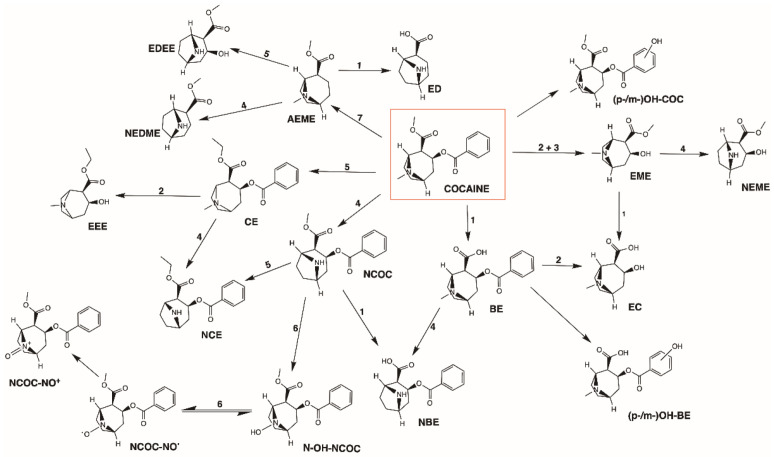Figure 2.
Metabolic pathways of cocaine. Cocaine is mainly metabolized through hydrolysis into benzoylecgonine (BE) and ecgonine methyl ester (EME), both of which can be further hydrolysed to ecgonine (EC). Cocaine may also undergo hydroxylation to yield para-/meta-hydroxycocaine (p-/m-OH-COC). Another minor metabolic reaction is the N-demethylation of cocaine to norcocaine (NCOC). In the presence of ethanol (EtOH), cocaine will undergo transesterification and form cocaethylene (CE). AEME, anhydroecgonine methyl ester; CYP450, cytochrome P450; ED, ecgonidine; EDEE, ecgonidine ethyl ester; EEE, ecgonine ethyl ester; FADM, flavin adenine dinucleotide-containing monooxygenase; hCE1, human carboxylesterase type 1; hCE2, human carboxylesterase type 2; NBE, norbenzoylecgonine; NCE, norcocaethylene; NCOC-NO•, norcocaine nitroxide; NCOC-NO+, norcocaine nitrosonium; NEDME, norecgonidine methyl ester; NEME, norecgonine methyl ester; N-OH-NCOC, N-hydroxy-norcocaine; (p-/m-)OH-BE, (para-/meta-)hydroxybenzoylecgonine; PChE, pseudocholinesterase.

